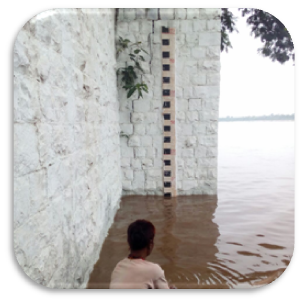
In a first in India, the Government of Madhya Pradesh (GoMP) has set up an “Anand Mantralaya” (Ministry of Happiness) with the Chief Minister himself in charge, and a “Rajya Anand Sansthan” (State Institute of Happiness), headed by a CEO. [“Madhya Pradesh to devise Happiness Index”; http://www.thehindu.com/news/national/madhya-pradesh-to-devise-happiness-index/article18516488.ece; The Hindu, Bengaluru; 21 May 2017].
Without in any manner belittling the initiative of CM Shivraj Singh Chouhan or questioning his motives, the very idea of measuring happiness appears gimmicky. Happiness is emotion and its experience is highly subjective. One can ask a person whether s/he is happy or not, whether s/he is happy with somebody or something or not, but the answer would be Yes or No, and one cannot set a percentage to it, like punching on a scale of service satisfaction at a mall such as “Very good”, “Good”, “Average”, etc. Happiness cannot be fractional or treated as a fuzzy set as in programming an automatic washing machine.
Notwithstanding, GoMP proposes to estimate the Happiness Index by conducting a “large scale” survey of 25,000 people according to a questionnaire devised by the Indian Institute of Technology, Kharagpur, to bring out the happiness levels of the people “with tangible and intangible things”. What GoMP will be pleased (and presumably happy) to do with or about the Happiness Index so computed, is a matter still to be revealed.
Happiness and unhappiness are an inseparable pair of opposites, and we have been taught that there is no light without darkness, etc. Though that is in the realm of philosophy, if we try to evaluate happiness in the real world, we must also look at unhappiness in that same world.
The flip side of the ‘Happiness coin’
The Narmada river projects involve construction of 3,000 small, 135 medium and 30 major dams and 1,215-km length of canals, affecting many thousands of families with displacement due to submergence. These project-affected families (PAFs), the majority of them in Madhya Pradesh, have been agitating over the past 31 years against unjust displacement, about not receiving compensation as ordered by the Supreme Court of India, about blatantly false Action Taken Reports of rehabilitation filed by state governments before the Supreme Court, and about humongous corruption in the rehabilitation process, estimated at about Rs.1,500 crores, by the Justice Jha Commission appointed by the High Court of Madhya Pradesh. It is piquant that GoMP is unwilling (and unhappy?) to make the Jha Commission Report public.
As we write, there is an on-going agitation of PAFs who are opposing the closure of the sluice gates of the Sardar Sarovar dam which, in the forthcoming monsoon will drown 40,000 families in hundreds of villages. It is difficult to imagine that there will be even a trace of happiness among these and the many more thousands of PAFs who are victims of earlier submergences. Rather than unhappiness, the predominant emotion is one of anger and a deep sense of injustice. This brings to mind the words of U.S Judge Brennan: “Nothing rankles more in the human heart than a brooding sense of injustice”. One cannot help wondering how these PAFs would respond to the happiness survey in the extremely unlikely event that they are asked.
Adding to happiness?
Apart from GoMP wilfully neglecting the PAFs it has been initiating police action against PAFs who agitate to demand their rightful due. Most recently, GoMP launched a “counter-offensive” in the form of the Narmada Seva Yatra organised on a grand scale at huge public expense, involving a gathering of over 100,000 people at Amarkantak, to promote itself as the saviour of Narmada river.
It is conceivable that the participants in this Narmada Seva Yatra would be happy, but again it is impossible to say how happy. It is difficult to dispel the doubt whether the creation of the Ministry of Happiness has anything to do with sidelining the unhappiness of the PAFs, the hapless children of Narmada mayya.
Epilogue
George Orwell, in his book titled “1984”, wrote about Oceania’s Ministries of Love, Peace, Plenty and Truth. In the double-speak which is at the core of “1984”, the Ministry of Peace really concerns itself with war, the Ministry of Truth with lies, the Ministry of Love with torture and the Ministry of Plenty with starvation.
It would be presumptious to call GoMP’s initiative of creating a Ministry of Happiness as double-speak, but the unhappiness of the many lakhs of Narmada mayya’s children subjected to deliberate injustice at the hands of successive governments over three decades makes it a mere act of gimmmicry, mocking at the reality of misery that PAFs face in a grim future.
Major General S.G. Vombatkere, VSM, retired as Additional DG Discipline & Vigilance in Army HQ AG’s Branch. With over 550 published papers in national and international journals and seminars, his area of interest is strategic and development-related issues. E-mail: [email protected]











































